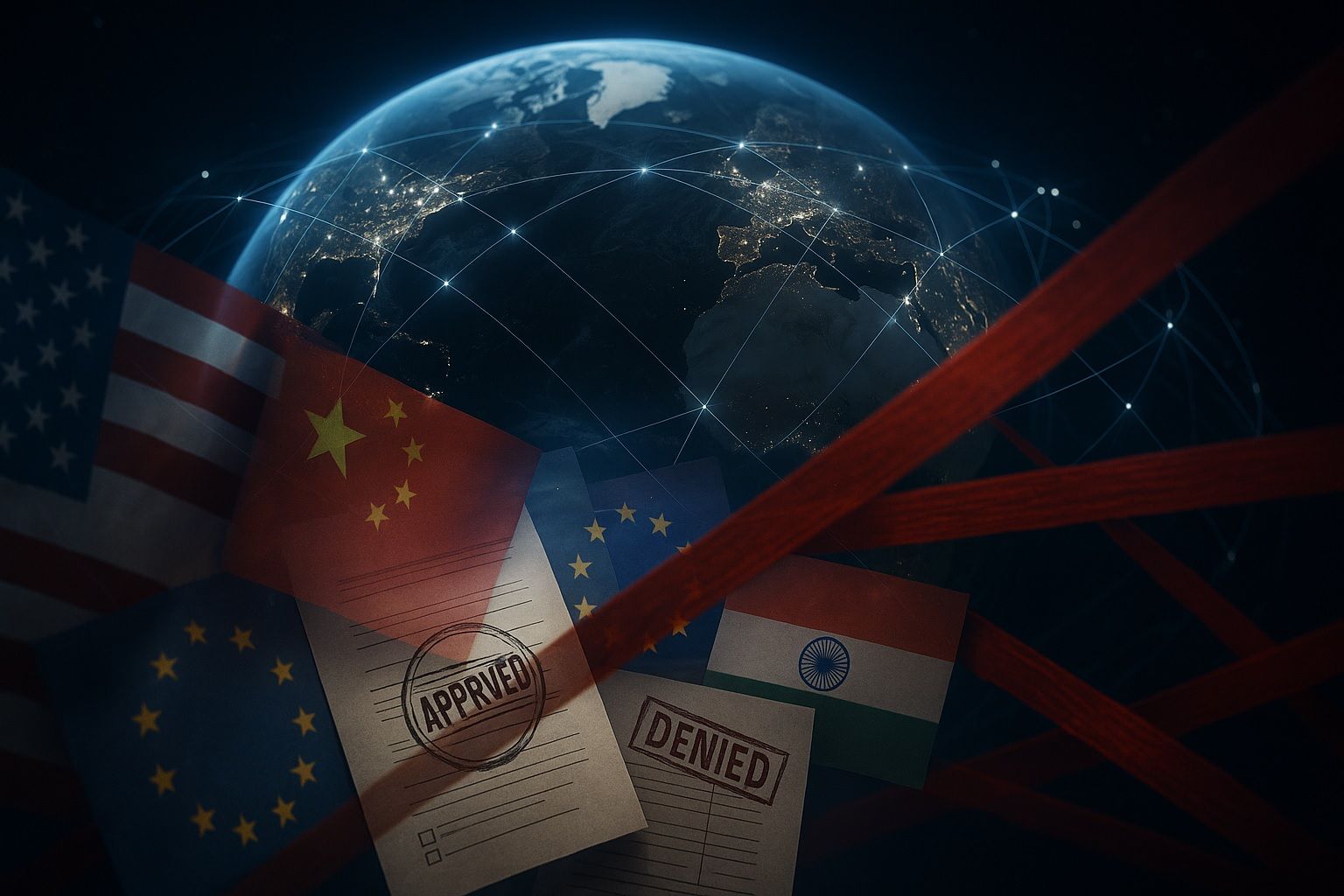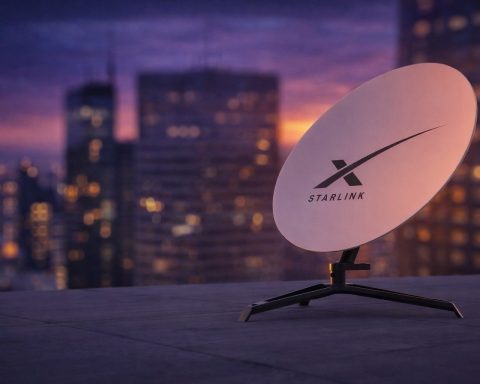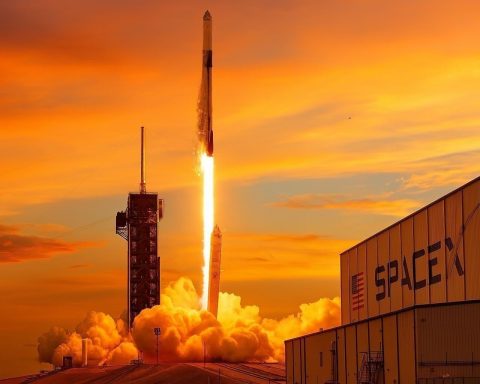- In May 2023 the U.S. FCC sided with Starlink over proposed uses of the 12.2–12.7 GHz band, preserving it for satellite services and preventing two-way 5G interference.
- In August 2022 the FCC denied Starlink’s $885 million Rural Digital Opportunity Fund subsidy due to performance concerns and high equipment costs, including a roughly $600 dish.
- By late 2024 Starlink had deployed about 7,000 satellites and controlled nearly two-thirds of all active satellites in orbit, signaling its regulatory and market prominence.
- France’s Conseil d’État annulled Arcep’s Starlink frequency license in April 2022 for lack of a required public consultation, leading to a reissued authorization after hearings.
- In May 2025 India granted Starlink a Letter of Intent to operate, conditioned on 29 security and compliance requirements including data localization, no foreign gateways, a local control center, lawful interception, minute-by-minute terminal tracking, at least 20% indigenous ground infrastructure, and a ~5-year license with partnerships with Reliance Jio and Bharti Airtel.
- In September 2024 Brazil’s Supreme Court ordered Starlink to block access to X, with Anatel threatening license revocation if Starlink did not comply, a threat Starlink carried out within a day.
- As of 2025 China has not licensed Starlink and drafted rules demanding real-time content censorship by satellite providers, while promoting domestic alternatives to deter foreign services.
- In February 2024 Russia officially barred Starlink from operating on Russian territory, warning of penalties for unauthorized use and reportedly attempting signal jamming during the Ukraine conflict.
- In 2023 Vietnam allowed Starlink on a five-year trial through 2030 with up to 600,000 users and no cap on foreign ownership, signaling strategic openness.
- In 2022 Nigeria became the first African country to license Starlink, including an international gateway, with later regulator actions to enforce pricing rules and require coordination of future price changes.
A Starlink user terminal installed on a riverboat in remote Brazil, reflecting the service’s reach into areas underserved by terrestrial internet [1]. Despite such promise, Starlink’s global expansion has repeatedly run into regulatory roadblocks in different countries.
Introduction: Starlink’s Global Ambitions vs. Regulatory Reality
Starlink, the satellite internet constellation operated by SpaceX, aspires to deliver high-speed broadband worldwide – from megacities to the most remote villages. Its global ambitions to bridge the digital divide come with an inherent challenge: navigating a patchwork of national regulations and red tape. Unlike terrestrial internet services, which operate within national borders, Starlink’s space-based system crosses boundaries, requiring licensing and spectrum approval in each country it serves. Around the world, regulators have responded with varying degrees of caution or enthusiasm. Some nations have eagerly welcomed Starlink to boost connectivity, while others have imposed strict conditions, citing concerns over licensing, spectrum interference, national security, competition, and compliance with local telecom laws. This report provides a country-by-country analysis of the regulatory hurdles Starlink has encountered through 2025, highlighting supportive versus hostile environments, real examples of regulatory actions, and the evolving policy landscape.
United States: Supportive Home Turf with Regulatory Battles
As Starlink’s home country, the United States has generally fostered a supportive environment for the constellation’s growth. The Federal Communications Commission (FCC) granted SpaceX licenses to deploy thousands of low-Earth orbit satellites and offer consumer broadband service. However, even in the U.S., Starlink faced regulatory battles over spectrum and subsidies:
- Spectrum Allocation Conflicts: A high-profile conflict emerged over the 12 GHz radio band. Terrestrial telecom players (Dish Network and others) sought to use this band for 5G, but SpaceX warned such use would knock out Starlink’s satellite signals. After lengthy technical reviews, the FCC in May 2023 sided with Starlink – it rejected proposals to repurpose the 12.2–12.7 GHz band for two-way 5G, preserving it for satellite services [2] [3]. This decision safeguarded Starlink’s spectrum but underscored the tussle between satellite and terrestrial operators in U.S. regulation.
- Licensing and Expansion: The FCC has scrutinized Starlink’s plans for next-generation services. In 2024, the FCC’s new Space Bureau denied SpaceX’s application to use additional frequencies (in the 1.6, 2.0, and 2.4 GHz bands) for direct-to-mobile connections from Starlink satellites [4] [5]. The rejection was on procedural grounds – the FCC isn’t yet accepting new entrants in those bands – illustrating that even Starlink must queue behind regulatory processes for service expansion.
- Broadband Subsidy Denial: In August 2022, the FCC made a striking decision to deny Starlink $885 million in rural broadband funds (RDOF subsidy) that the company had initially won. The FCC concluded Starlink hadn’t proven it could meet promised speeds and requirements for that program [6]. FCC officials noted Starlink’s high equipment costs (each user needs a ~$600 dish) and performance that “had difficulty meeting the basic…speed standards” as reasons [7]. This denial – later upheld in 2023 – showed U.S. regulators’ reluctance to subsidize Starlink at public expense, reflecting a concern for accountability and tech-neutral fairness.
- Competition and Market Oversight: U.S. regulators are also mindful of competition in space broadband. By late 2024, Starlink had deployed about 7,000 satellites and controlled nearly two-thirds of all active satellites in orbit [8]. FCC Chair Jessica Rosenworcel cautioned that “our economy doesn’t benefit from monopolies” and stressed the need for multiple players and constellations in satellite internet [9]. This stance doesn’t impede Starlink’s licensing per se, but it signals U.S. policy will encourage rivals (like Amazon’s Project Kuiper) rather than let Starlink dominate uncontested.
In summary, the U.S. has given Starlink regulatory green lights for operation, but not without checks and conditions. The FCC’s role has been to ensure spectrum sharing, prevent interference, evaluate Starlink’s service claims, and promote a competitive market. Starlink’s American experience shows that even a domestic tech disruptor must navigate bureaucracy – albeit a generally permissive one – balancing innovation with public-interest safeguards.
Europe and the EU: Open Doors with Oversight and Local Conditions
Across Europe, Starlink has encountered a mix of welcome and wariness. The European Union and individual European countries recognize the value of satellite broadband for remote areas, and most have allowed Starlink to operate, but subject to regulatory oversight, procedural safeguards, and competition considerations:
- Licensing by National Regulators: In the EU, satellite services require country-by-country authorization. Many nations moved swiftly – e.g., Germany and the UK (though no longer in the EU) approved Starlink terminals as early as 2021, seeing potential to connect rural users. The United Kingdom’s Ofcom licensed Starlink for user terminals, making the UK one of Starlink’s first markets in Europe [10]. Similarly, Germany, Italy, and others issued gateway and user station licenses under standard frameworks. These supportive actions reflect Europe’s general openness to new technologies that can bridge broadband gaps.
- France’s Legal Reversal: France presented a notable case of regulatory red tape. The French telecom regulator (Arcep) authorized Starlink in early 2021. However, France’s highest administrative court (Conseil d’État) annulled Starlink’s frequency license in April 2022 after two activist groups challenged the approval [11] [12]. The court held that Arcep should have conducted a public consultation, given Starlink’s service could significantly impact the internet access market and users [13]. In other words, procedural missteps – not any technical fault of Starlink – led to the license being revoked. Starlink temporarily lost its right to operate in France [14] until Arcep went back, held public hearings, and re-issued the authorization later with proper process. The French episode highlights Europe’s emphasis on transparent public interest evaluation (even for innovative services) and shows that regulators may be challenged if they appear to bypass due process or competition scrutiny.
- EU Competition & Alternatives: At the EU level, there is an implicit wariness of over-reliance on a single foreign provider. The European Commission has initiated its own “IRIS²” satellite constellation project (approved in 2022) to ensure secure European satcom capacity by late 2020s – a sign that Europe values having domestic alternatives. European officials have also echoed competition concerns: for instance, noting Starlink’s large share of active satellites and urging that more players enter the field [15]. While the EU hasn’t imposed any special restrictions on Starlink yet, this mindset means Starlink’s expansion is watched closely. Any future dominance could invite antitrust or regulatory responses to keep markets open.
- Compliance with Local Telecom Laws: Starlink in Europe must comply with each country’s telecom and security requirements just like any ISP. This includes lawful intercept capabilities (enabling police to monitor communications with a warrant), data protection rules, and safety standards for equipment. For example, when France reauthorized Starlink, it likely had to ensure alignment with European data/privacy laws and possibly conditions to share certain data with authorities under French law. In general, European regulators have treated Starlink not as an untouchable space service, but as another telecom operator that must play by local rules on consumer rights, safety, and security.
In summary, Europe’s regulatory environment has been accepting but procedurally rigorous. Starlink is operating in most of Europe, yet it has had to weather court challenges and demonstrate compliance with public-interest safeguards. Europe’s case shows supportive regulation balanced by due diligence – even “newspace” ventures must respect the old-world rules of transparency, competition, and legal process.
India: A Cautious Welcome with Strict Conditions and Delays
India’s approach to Starlink can be characterized as highly cautious and sovereignty-driven. With its massive connectivity needs, India stands to benefit from satellite internet – but the government has insisted that Starlink operate on New Delhi’s terms. This resulted in prolonged licensing delays and a long list of conditions before Starlink could enter the Indian market:
- Initial Licensing Hurdles: Starlink’s journey in India began turbulently. In 2021, the company collected pre-orders from Indian customers, only to be ordered by the government to refund deposits because it lacked an operating license. India’s Department of Telecommunications (DoT) publicly warned Starlink was not authorized and cautioned citizens against using it until official approval. This set the tone that India would move deliberately.
- National Security Scrutiny: A core concern for India was national security and lawful control of the communications network. For over two years, Starlink’s application languished as agencies – particularly the Home Ministry – raised security objections [16]. Officials feared an overseas-operated satellite service could circumvent India’s ability to monitor and control communications when needed. Talks intensified by 2023, and Indian ministers explicitly laid out what Starlink must do to assuage these concerns [17] [18].
- Tough License Conditions: By May 2025, India finally granted Starlink a Letter of Intent (LoI) to operate – but only after Starlink agreed to a stringent set of 29 security and compliance conditions [19] [20]. Key Indian requirements include:
- Data Localization: All user data traffic must stay within India’s borders (Starlink cannot route Indian users’ internet through overseas gateways) [21]. Local data centers must be used for handling Indian communications [22].
- No Foreign Gateways: Starlink is barred from linking Indian users to any overseas earth stations or infrastructure [23]. This ensures complete local oversight of traffic.
- Local Control Center: The government required Starlink to establish a control facility in India to enable authorities to suspend or shut down service in specific areas when law and order demands [24]. Essentially, India wanted an “off switch” in-country for emergencies.
- Lawful Interception: Starlink must allow Indian law enforcement to intercept and monitor communications on its network when legally authorized [25]. The system should be technically capable of providing access for government monitoring, similar to any telecom operator.
- User Terminal Tracking: For mobile Starlink terminals, India mandates location tracking – terminals must report their location periodically (every minute or per ~2.6 km moved) [26] so that authorities know if a device nears sensitive borders or areas.
- Indigenous Infrastructure: At least 20% of Starlink’s ground network in India must be indigenously built or sourced [27]. This aligns with India’s “Make in India” ethos, ensuring some local procurement and technology transfer.
- License Term Limits: India is reportedly issuing only a 5-year license for Starlink’s gateway (shorter than the 20-year term some competitors have) [28], essentially on a pilot basis to review performance and compliance before any renewal.
- Negotiations and Concessions: During the licensing negotiations, India initially proposed even tougher clauses – such as requiring an Indian majority ownership stake in Starlink’s local entity, and curbs on service near India’s international borders. Starlink pushed back, and India dropped those particular demands (100% foreign direct investment was allowed, as in other telecom sectors) [29] [30]. These compromises illustrate a give-and-take: India asserted many controls but showed flexibility on ownership once other safeguards were in place.
- Local Partnerships: A striking feature of Starlink’s India strategy is partnership with domestic telecom firms. Starlink has aligned with Reliance Jio and Bharti Airtel – the country’s largest carriers – for market access and deployment support [31]. By partnering with Indian giants (who can assist with distribution and maybe regulatory cover), Starlink navigated the market’s “tech sovereignty” stance. Analysts note that India’s willingness to approve Starlink “albeit on New Delhi’s terms” reflects a broader hybrid approach: welcoming foreign tech but insisting on co-development and control [32].
After intense scrutiny, India’s stance eased following high-level diplomacy – Elon Musk met Prime Minister Narendra Modi in mid-2023, and shortly after, officials indicated Starlink’s license was on track. By early 2025, Minister of State for Telecom Shri Chandrasekhar confirmed Starlink’s application was in final stages [33]. Once Starlink agreed to the above conditions, the green light was given. Indian officials have since downplayed any threat to local industry, noting that Starlink will mainly connect rural and remote areas and is “10 times more expensive” than traditional networks – hence “not much to worry about” for incumbents [34] [35]. The service will fill niche gaps (e.g. village broadband and disaster resilience) rather than compete head-on with India’s cheap mobile data networks.
In summary, India’s regulatory red tape was extensive – Starlink had to endure years of delay and meet an exhaustive checklist of security and compliance measures. India’s case exemplifies how concerns over sovereignty, security, and control of data can shape a hard-line regulatory approach. Starlink’s eventual entry is a tentative, tightly conditioned one – a “cautious welcome” indicating that India values connectivity improvements, but not at the expense of oversight or the interests of domestic telecom players.
China: A Wall of Restrictions and an Implicit Ban
If India set a high bar for Starlink, China has effectively barred Starlink altogether. China’s regulatory environment is hostile to foreign satellite internet networks, primarily due to national security and information control priorities:
- No License, No Operation: As of 2025, Starlink is not licensed to operate in China – nor is it likely to receive approval. China’s government maintains one of the world’s strictest regimes for internet governance (the “Great Firewall”), and an independent, foreign-controlled network like Starlink is anathema to that model. Simply put, China views Starlink as a potential tool for bypassing state censorship and surveillance, and thus treats it as a security threat.
- Censorship Requirements: In 2024, Beijing went so far as to draft explicit rules targeting satellite internet services. The Cyberspace Administration of China published proposed regulations demanding real-time censorship of content by any satellite broadband operator [36]. Providers would be responsible for ensuring no prohibited content (anything from political dissent to pornography, as broadly defined by Chinese law) is transmitted via their satellites [37]. These draft rules insist that satellite internet providers “align with national security and network security requirements” and even hold providers accountable for their users’ activities [38]. In practice, compliance would mean filtering and blocking content in line with Chinese censorship – a requirement Starlink (which provides unfettered global internet access) is fundamentally unsuited to meet. Such regulations amount to a legal firewall extending into space [39], and they explicitly exclude services like Starlink unless they submit to Chinese government control.
- Security and Military Concerns: Chinese military and strategic analysts have openly expressed concern about Starlink’s capabilities. Reports in Chinese media have noted Starlink’s role in military conflicts (e.g. its use by Ukraine) and posited that the network could be used by the U.S. or others to “undermine national security.” Chinese authorities have not only denied Starlink access but are developing aggressive countermeasures – from exploring anti-satellite techniques to fast-tracking domestic competitors.
- Domestic Alternatives – Keeping Musk Out, Chinese In: Rather than invite Starlink, China is backing its own low-Earth-orbit constellations. Chinese companies (with state support) are launching projects like “GuoWang” and “Hongyun” to deploy hundreds or thousands of satellites for broadband [40]. In fact, Chinese space startup SpaceSail, backed by Shanghai’s government, is expanding into markets where Starlink faces friction [41]. This indicates a strategy: where Musk hits red tape, China offers an alternative under its influence. China has also reportedly pressured or persuaded friendly countries to consider Chinese satellite services instead of Starlink [42] [43]. For example, when neighboring Kazakhstan mulled banning Starlink on security grounds, China’s SpaceSail swiftly set up shop there [44] [45].
- Enforcement – Jamming and Penalties: Though unofficial, there are indications China would actively block Starlink signals or penalize users if Starlink terminals appeared on its soil. Any Chinese citizen attempting to use Starlink without permission could face legal punishment under espionage or unauthorized telecom provisions. (For context, Russia – a close Chinese partner – has said anyone in Russia using Starlink could be punished, and China is no more lenient in such matters.) Also, there were reports that Starlink’s frequencies have been jammed in regions like Xinjiang by Chinese authorities as a precaution, though details are opaque.
In essence, China has erected a regulatory Great Wall against Starlink. The combination of formal regulations requiring censorship [46], promotion of state-approved alternatives, and intolerance for external networks means Starlink is effectively banned. This hostile environment stems from China’s overriding concern: maintaining state control over information flows. Starlink’s global, encrypted internet service is simply incompatible with that objective, leading China to use every regulatory tool (and technical countermeasure) to keep it out.
Russia: National Security Alarm and Prohibition
Russia’s stance toward Starlink closely mirrors China’s in hostility. The Russian government has treated Starlink as a security threat and an unwelcome foreign intrusion, especially in light of geopolitical tensions and the war in Ukraine:
- Official Ban on Operations: Russia has made it clear that Starlink is not authorized to operate on Russian territory. In February 2024, the Kremlin explicitly stated that Starlink “was neither certified for use in, nor officially supplied to, Russia, and therefore could not be used” [47]. In other words, Starlink has no license and any of its equipment in Russia is operating outside the law. The Kremlin’s spokesperson underscored that Starlink “cannot be used officially in any way” in Russia [48]. This is essentially an official ban – Russia will not issue licenses to Starlink.
- Threats of Legal Action: Russian authorities have gone further to dissuade use of Starlink. Reports (including remarks shared on Russian forums and media) indicate that officials warned anyone caught using Starlink could face fines or even jail. While exact penalties are not public, the message is strong: using unauthorized foreign satellite communications is viewed as a form of illegal bypass of state-controlled telecom. Given Russia’s laws against using unlicensed telecom systems, a Russian citizen setting up a Starlink dish could be accused of using an unlicensed frequency and possibly spreading prohibited information. This threat environment effectively prevents law-abiding Russians from even attempting to use Starlink.
- Wartime Electronic Warfare: Russia’s hostility intensified after Starlink became crucial in Ukraine’s defense communications. Russian forces have repeatedly tried to jam Starlink signals on the battlefield, seeing the system as aiding the Ukrainian military. While not a “regulatory” action, Russian officials (like former Roscosmos head Dmitry Rogozin) have also issued menacing statements calling Starlink satellites “legitimate targets” in war. This underscores Russia’s view of Starlink as not just a commercial service but a strategic military asset of the West – further justifying in their eyes that it must not operate within Russia.
- Isolation of Russian Internet: Russia has been pursuing “sovereign internet” measures, tightening control over its domestic internet and reducing reliance on foreign infrastructure. In that context, an independent satellite network like Starlink is seen as undermining Russia’s internet sovereignty and censorship regime. The Russian government prefers users go through state-controlled satellites or domestic providers where content can be filtered or shut off as needed. Starlink’s ability to bypass censorship is precisely why it’s rejected. (Notably, Russia even moved to ban VPN services and anonymizers; Starlink is an even bigger workaround to state controls.)
In summary, Russia has slammed the door on Starlink via certification denial and intimidation. The “red tape” here is an outright prohibition motivated by national security and information control. Starlink’s involvement in the Ukraine conflict only hardened Russian resolve to block it. For the foreseeable future, Starlink will remain illicit in Russia, with the government leaning on both legal and electronic means to prevent its usage.
Brazil: Early Embrace Turns to Regulatory Showdown
Brazil exemplifies a country that was initially enthusiastic about Starlink, only to later entangle it in a regulatory dispute – in this case, due to an unexpected clash involving content moderation on Musk’s social media platform. The Brazilian experience highlights how supportive regulatory climates can shift when local laws and politics come into play:
- Quick Green Light for Connectivity: Brazil’s telecom regulator Anatel was among the early adopters in Latin America. It granted Starlink approval to operate in 2022, seeing satellite broadband as a boon for connecting Brazil’s vast remote regions (such as the Amazon rainforest communities). By mid-2022, Starlink Serviços de Internet Ltda (SpaceX’s Brazilian arm) launched in select areas, and by early 2023 Starlink was authorized countrywide [49]. The Brazilian government even partnered with Starlink on pilot projects – for example, to connect isolated Amazon schools and clinics to the internet. The then-government under President Jair Bolsonaro welcomed Elon Musk, who visited Brazil in 2022 touting Starlink’s help for Amazon monitoring and connectivity. Overall, Brazil’s initial regulatory stance was highly supportive, positioning itself as a regional leader in adopting the technology.
- Licensing Details: Anatel issued Starlink a license valid through 2027, covering thousands of satellites overhead [50]. The terms largely mirrored standard telecom licenses, but Anatel did flag expectations around fair competition and consumer protection. (Brazil has a history of strong consumer telecom regulation.) As Starlink’s user base grew into 2023, Brazil became one of Starlink’s biggest markets, reportedly with over 200,000 subscribers by late 2024 [51] [52].
- Contentious Turn – The X Suspension Feud: The regulatory harmony broke down in 2024 due to an unrelated issue: the behavior of Musk’s social media company, X (formerly Twitter), in Brazil. In late 2023 and 2024, Brazil’s judiciary, led by Supreme Court Justice Alexandre de Moraes, ordered X to remove disinformation and hate content. X defied some orders, leading the court to suspend X nationwide in September 2024. Because Starlink is an internet service provider in Brazil, the court’s order applied to it as well – requiring all ISPs to block access to X domestically. Starlink initially refused to comply. Musk publicly decried the order as censorship and reportedly instructed Starlink not to shut off X on its network [53] [54].
- Regulator Reaction – License Threatened: Brazil’s regulator Anatel swiftly took action when Starlink refused a direct court order. Anatel officials warned that Starlink’s non-compliance put it in violation of Brazilian regulations, and floated sanctions including revoking Starlink’s license in Brazil [55]. The President of Brazil, as well as Anatel’s board, backed the Supreme Court’s stance, emphasizing that no provider is above the law. In essence, Brazil was ready to use the ultimate regulatory weapon – pulling Starlink’s authorization – to enforce its court mandates [56] [57].
- Starlink Backtracks: Confronted with frozen bank accounts and the threat of losing its operating rights, Starlink reversed its position within a day. On September 4, 2024, Starlink informed Anatel that it would comply and began blocking access to X for Brazilian users, as ordered [58] [59]. Anatel confirmed Starlink belatedly implemented the blocks, avoiding immediate sanctions [60]. Starlink complained about the “illegal treatment” of having its assets frozen, but acknowledged it must follow the order [61].
- Aftermath and Reflections: This dramatic episode underscores that even a supportive country like Brazil can clamp down if a service flouts local laws. Brazil’s regulatory institutions demonstrated independence – enforcing court orders decisively on a high-profile foreign company. For Starlink, the lesson was clear: operating in Brazil means complying with Brazilian judicial and regulatory decisions, whether they concern spectrum or content. Notably, aside from this incident, Brazil remains generally positive about Starlink; in 2023 Anatel even authorized Starlink to expand with 7,500 second-generation satellites over Brazil [62]. But the “X feud” introduced an unexpected regulatory risk: Musk’s various businesses (satellites and social media) can become entangled. Brazilian authorities essentially used Starlink’s license as leverage to ensure obeying of domestic internet rules.
In summary, Brazil’s regulatory environment started as highly favorable – embracing Starlink to boost connectivity – and remains fundamentally welcoming for satellite broadband. However, Brazil has proven it will enforce compliance strictly, even to the point of threatening a license cancellation, if a provider (Starlink in this case) conflicts with national laws or court orders. It’s a reminder that no matter how innovative the service, national laws (from telecom regulations to content requirements) still apply on the ground.
Other Notable Cases: Supportive and Restrictive Regimes Around the Globe
Beyond the major powers above, various other countries illustrate the spectrum of regulatory responses to Starlink:
- Supportive Early Adopters: Several countries have been especially eager to approve Starlink to improve internet access. Philippines was the first in Southeast Asia to license Starlink, fast-tracking approval in 2022 and hailing the service as a boost to connectivity in its many islands. Nigeria became the first African nation to greenlight Starlink in mid-2022, with the Nigerian Communications Commission granting licenses (including an international gateway license) for Starlink to operate [63]. Nigerians quickly embraced it for high-speed connectivity. However, even supportive regulators enforce rules: the NCC later pressed Starlink to follow pricing regulations, admonishing the company for raising consumer prices without prior approval [64]. Starlink complied by coordinating future price changes with the regulator, showing that basic telecom rules (like tariff oversight) still bind it.
- Quick Trials in Asia-Pacific:Vietnam presents a case of a government balancing geopolitics and tech adoption. In 2023, Vietnam announced it would allow Starlink on a trial basis for 5 years (through 2030) with up to 600,000 users [65] [66]. Notably, Vietnam imposed no cap on foreign ownership for this service [67], signaling openness. Analysts viewed this as Vietnam hedging strategic bets – a friendly gesture to a U.S. company amid U.S.-Vietnam relations, possibly to avoid U.S. trade pressure [68]. Similarly, countries like Malaysia and Indonesia have explored Starlink to connect rural regions; Malaysia allowed Starlink from 2023 for schools in remote Borneo, for example. These countries generally require Starlink to work through local partners or obtain gateway licenses, but have not erected major barriers so far.
- Cautious Case: Pakistan – Pakistan has yet to approve Starlink, reflecting political and security hesitation. Officially, Pakistan’s telecom authority (PTA) says Starlink’s license is awaiting a “security clearance.” Indeed, Starlink service is not available in Pakistan “even through illegal means,” a Senate panel was told in 2023 [69]. Behind the scenes, Pakistan’s establishment has been wary, partly due to Elon Musk’s perceived political comments. In early 2025, Pakistani lawmakers debated delaying Starlink’s entry because Musk had offended Pakistan in tweets about sensitive issues [70] [71]. Some legislators bizarrely linked Starlink’s license to Musk apologizing for his remarks. This intertwining of politics with regulatory approval shows how, in some countries, a license might be contingent on political comfort as much as technical qualifications. Pakistan also banned Musk’s X platform in 2024 for content reasons, so like China/Russia, it may fear Starlink as a backdoor around internet controls. As of 2025, Starlink remains in limbo there, demonstrating geopolitical mistrust translating into licensing delays.
- Regulatory Barriers in Africa: While Nigeria welcomed Starlink, South Africa – the continent’s most advanced telecom market – has effectively blocked Starlink unless it meets local ownership laws. South Africa requires telecom licensees to be at least 30% owned by historically disadvantaged (Black) South Africans. Musk has publicly balked at this rule, refusing to dilute Starlink’s ownership, and claimed this was why Starlink “wasn’t able to get a license” there [72]. South African authorities counter that Starlink never formally applied and that rules won’t be bent for one company [73] [74]. The government did consider a policy tweak in 2023 to allow alternatives to equity – possibly to accommodate Starlink – but faced criticism that it was “catering to Starlink” preferentially [75] [76]. As of 2025, Starlink is not available in South Africa, illustrating how local empowerment and equity regulations can be a significant red tape hurdle.
- Authoritarian Regimes: In countries with tight control over information, regulators have uniformly kept Starlink out. Iran has not authorized Starlink; in fact, Iranian authorities consider possession of Starlink kits illegal. During the late 2022 protests, Starlink terminals were smuggled in to evade internet blackouts – prompting Tehran to try to jam signals and arrest users where possible. North Korea and Turkmenistan (among the world’s most censored nations) likewise would never permit Starlink’s open internet access. These regimes do not even need specific Starlink rules – their general ban on unapproved communications covers it. The contrast is that individuals in those countries desperately see Starlink as a lifeline past censorship, but the regulatory state stands as a brick wall against it.
The above cases round out the picture: many developing countries embrace Starlink as an opportunity, sometimes with minor strings attached, whereas others block or delay it due to political, security, or local industry concerns. Each nation’s “red tape” reflects its unique policy priorities – from economic empowerment to cybersecurity to personal whims of leaders. Starlink’s global rollout thus encounters a mosaic of regulatory stances, requiring the company to adapt country by country.
Summary Table: Starlink’s Key Regulatory Issues by Country/Region
The table below summarizes the major regulatory challenges or conditions Starlink has faced in each country or region discussed:
| Country/Region | Key Regulatory Issues and Actions |
|---|---|
| United States | Spectrum conflicts: Resolved in Starlink’s favor (FCC kept 12 GHz for satellite, denying Dish’s 5G plan) [77] [78]. Funding denial: FCC rejected Starlink’s $885M rural subsidy over performance doubts [79]. Ongoing FCC oversight on collision avoidance & competition (calls for more players given Starlink’s dominance) [80]. Overall supportive licensing but with strict FCC scrutiny. |
| European Union & Europe | General approval across EU states, but with due process and competition oversight. Example: France’s top court voided Starlink’s 2021 license over lack of public consultation [81] [82]; license reinstated after procedural compliance. European regulators require Starlink to follow local telecom laws (lawful intercept, etc.) and are fostering alternative European constellations (IRIS²) to avoid sole reliance on Starlink. |
| India | Protracted licensing (2019–2025) due to national security and “tech sovereignty” concerns. License granted only after Starlink agreed to 29 conditions [83] [84]: data localization, use of Indian gateways only [85], installation of a local control center [86], mandatory interception capability [87], user terminal tracking [88], partial indigenization of infrastructure [89], etc. Initially had to refund preorders for operating without license. India limited license term (~5 years) and required Starlink to partner with local telecom firms [90]. |
| China | Not licensed – effectively banned. China’s draft regulations demand real-time censorship by satellite operators [91] and alignment with China’s cyber security laws [92], which Starlink cannot meet. Starlink viewed as a national security threat; Chinese authorities prevent its use and promote state-backed alternatives. No official Starlink service; any use would be illegal under Chinese law. |
| Russia | Officially barred. The Kremlin stated Starlink is “not certified” in Russia and “cannot be used” legally [93]. Authorities warned of punishments for unauthorized use. Motivated by security/censorship – Starlink seen as a tool to evade Russian control (especially after Starlink’s role in Ukraine). Russia has reportedly attempted jamming and declared Starlink satellites possible military targets. |
| Brazil | Initially welcoming (Anatel licensed Starlink, enabling rapid expansion in 2022–23). Regulatory clash in 2024: Starlink defied a Brazilian court order to block X (Twitter), leading Anatel to threaten license revocation [94]. Starlink then complied within a day [95]. Demonstrated that Brazil enforces local law on Starlink – including content orders. Otherwise, Brazil authorized thousands more Starlink satellites and integrates the service in connectivity programs. |
| Other Supportive Examples | Philippines: first in SE Asia to approve Starlink (2022) as a boost to rural internet. Nigeria: first in Africa (2022), full license granted [96]; later reminded Starlink to follow pricing rules [97]. Vietnam: allowed a 5-year Starlink trial (through 2030) with up to 600k users, showing geopolitical openness [98]. Malaysia, Mexico, etc.: facilitated Starlink for remote areas; generally require local entity or partner but no major blocks. |
| Other Restrictive Cases | Pakistan: no license yet – awaiting “security clearance”; political distrust of Musk has delayed approval [99] [100]. South Africa: requires 30% local Black ownership – Starlink hasn’t complied, so no license [101]. Iran, N. Korea, etc.: not permitted; Starlink use is outlawed as it undermines censorship (though activists use it covertly). |
(Sources: compiled from national regulatory statements and news reports as cited in text.)
Conclusion: Navigating the Patchwork of Red Tape
Starlink’s quest to blanket the globe with internet coverage vividly illustrates the old adage that “all politics is local.” Regulatory red tape has emerged as one of Starlink’s biggest challenges, often as formidable as the technological hurdles of launching thousands of satellites. From democratic nations to authoritarian regimes, each country’s rules reflect local priorities – whether that’s protecting national security, nurturing domestic telecom firms, asserting data sovereignty, or simply ensuring foreign companies respect local laws.
On one end, we have embracing nations: those like the U.S., much of Europe, and Brazil (initially) that see Starlink as a driver of innovation and digital inclusion – they have granted licenses, sometimes even expedited them, but typically with conditions to safeguard competition and compliance. On the other end, there are blocking nations: China and Russia outright, and others by extension, which perceive Starlink as a threat to be mitigated or barred, either for political control or strategic reasons. In the middle lie countries with a foot in both worlds – exemplified by India’s “yes, but on our terms” stance, or Pakistan’s hesitant stall, where authorities are weighing benefits against perceived risks in real time.
As of 2025, Starlink has navigated into over 50 countries, but not without concessions: building local gateways, partnering with incumbent telecoms, obeying unique legal mandates, and engaging in diplomacy to smooth out issues. Developments continue: regulators are drafting new rules for the burgeoning satellite-internet industry (as seen with the FCC’s evolving spectrum policies and China’s censorship drafts). International bodies like the ITU are also active in coordinating spectrum and orbital slots for mega-constellations, which could impose further constraints on deployments to prevent interference or collisions.
For Starlink and similar providers, success globally will mean mastering this patchwork of regulations – essentially, becoming as adept in policy and law as in engineering. The differing approaches also raise broader questions for the future: Will there be more harmonization of rules to ease global satellite services, or will we see a deeper splintering of the satellite internet along geopolitical lines (with Western, Chinese, and other regional systems each fenced by their bloc’s regulations)?
What is clear is that red tape is now a key part of the orbital landscape. Starlink’s experience around the world shows that technology can leap oceans and sky, but ultimately, it must land within the jurisdiction of nations – each with their own red lines. Bridging the digital divide from space, therefore, requires not just rocketry and routers, but diplomacy and regulatory deftness. Starlink’s story thus far – of red tape encountered and sometimes cut – will likely set the precedent for all who follow in connecting the world, one license at a time.
References
1. www.reuters.com, 2. www.fierce-network.com, 3. www.fierce-network.com, 4. totaltele.com, 5. totaltele.com, 6. www.reuters.com, 7. www.reuters.com, 8. www.reuters.com, 9. www.reuters.com, 10. www.capacitymedia.com, 11. www.reuters.com, 12. www.reuters.com, 13. www.reuters.com, 14. www.reuters.com, 15. www.reuters.com, 16. timesofindia.indiatimes.com, 17. timesofindia.indiatimes.com, 18. timesofindia.indiatimes.com, 19. economictimes.indiatimes.com, 20. economictimes.indiatimes.com, 21. economictimes.indiatimes.com, 22. economictimes.indiatimes.com, 23. economictimes.indiatimes.com, 24. timesofindia.indiatimes.com, 25. timesofindia.indiatimes.com, 26. economictimes.indiatimes.com, 27. economictimes.indiatimes.com, 28. www.atlanticcouncil.org, 29. economictimes.indiatimes.com, 30. economictimes.indiatimes.com, 31. timesofindia.indiatimes.com, 32. www.atlanticcouncil.org, 33. www.communicationstoday.co.in, 34. economictimes.indiatimes.com, 35. economictimes.indiatimes.com, 36. www.theregister.com, 37. www.theregister.com, 38. www.theregister.com, 39. www.theregister.com, 40. www.cnbc.com, 41. restofworld.org, 42. restofworld.org, 43. restofworld.org, 44. restofworld.org, 45. restofworld.org, 46. www.theregister.com, 47. www.reuters.com, 48. www.reuters.com, 49. blog.telegeography.com, 50. www.teslarati.com, 51. www.reuters.com, 52. www.reuters.com, 53. www.reuters.com, 54. www.reuters.com, 55. www.reuters.com, 56. www.reuters.com, 57. www.reuters.com, 58. www.reuters.com, 59. www.reuters.com, 60. www.reuters.com, 61. www.reuters.com, 62. www.reuters.com, 63. www.harlemsolicitors.com, 64. www.bloomberg.com, 65. www.reuters.com, 66. www.reuters.com, 67. www.reuters.com, 68. www.reuters.com, 69. tribune.com.pk, 70. www.aljazeera.com, 71. www.aljazeera.com, 72. apnews.com, 73. apnews.com, 74. apnews.com, 75. apnews.com, 76. apnews.com, 77. www.fierce-network.com, 78. www.fierce-network.com, 79. www.reuters.com, 80. www.reuters.com, 81. www.reuters.com, 82. www.reuters.com, 83. economictimes.indiatimes.com, 84. economictimes.indiatimes.com, 85. economictimes.indiatimes.com, 86. timesofindia.indiatimes.com, 87. timesofindia.indiatimes.com, 88. economictimes.indiatimes.com, 89. economictimes.indiatimes.com, 90. timesofindia.indiatimes.com, 91. www.theregister.com, 92. www.theregister.com, 93. www.reuters.com, 94. www.reuters.com, 95. www.reuters.com, 96. www.harlemsolicitors.com, 97. www.bloomberg.com, 98. www.reuters.com, 99. www.aljazeera.com, 100. www.aljazeera.com, 101. apnews.com










